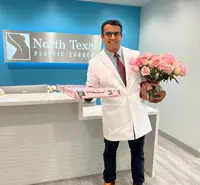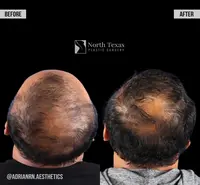Posted: February 5, 2013
By Sacha Obaid
Many patients who have had liposuction often worry about activities after their surgery. It is important to ensure the underlying layer of skin and connective tissue heals to maintain a flawless consistency and shape. Massages are touted as the best solution for smoothing out irregularities while ensuring consistent healing and skin appearance, but is it the right solution for liposuction patients?
Why Have a Massage After Liposuction?
During the post-surgery period, natural scar tissue can build up in the treated areas. This tissue forms within the small tunnels created by the suction devices used to extricate excess fat cells, causing connective tissue and superficial fat to lump up and create uneven areas along the surface. This can cause dimples, dents, and lumpy or uneven areas to form along treated areas.
Scar tissue is normally a good thing, as it’s a good sign that your body is properly healing itself. However, lumps of permanent scar tissue can affect your skins appearance negatively. For post-operative liposuction patients, the appearance of such tissue underneath skin may make it seem like it defeats the whole purpose of liposuction treatment.
Smoothing down your skin before the underlying tissue hardens into permanent scar tissue is absolutely important. A vigorous massage routine can help reduce these surface irregularities by preventing scar tissue from forming. Massage can also help reduce skin edema. Many surgeons recommend that their patients perform self-massage on affected areas, including the torso, neck, and mid-face.
Are Massages Safe?
Massages after liposuction are generally seen as safe and beneficial for the body. In the vast majority of cases, surgeons recommend that patients start massaging treatment areas as soon as they are able to. It usually takes a week or more for patients to lose much of the soreness that comes with liposuction treatments. Afterwards patients can do a variety of self-massages or have a friend or partner help out with massages.
Cool laser and ultrasound treatments are painless and non-intrusive alternatives to massage, despite being more expensive than ordinary massage. Not only does this type of massage relieve swelling by stimulating the lymphatic system’s ability to drain away edema, it’s also a particularly effective at softening and breaking up hardened scar tissue.
Some surgeons prefer their patients to seek the services of a physical therapist that specializes in professional lymphatic drainage massage. Your therapist should have a wide range of options on hand for massaging your skin, along with plenty of additional advice for healing post-surgery.
Final Recommendation
Ultimately, it is up to your doctor at North Texas Plastic Surgery to decide whether and when to start a massage regimen. The time frame for massages can vary depending on many factors, including the amount of liposuction performed and the tenderness of affected areas. Some people are able to self-massage themselves in just a matter of days, while it takes a month for some to get over the tenderness. As a liposuction patient, it’s safe for you to receive massage treatments, just as long as you get approval from your doctor.

 February 5, 2013
February 5, 2013





















